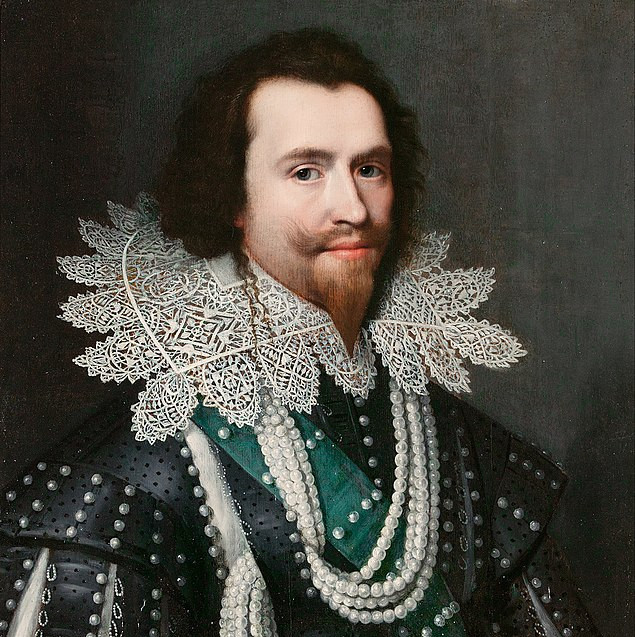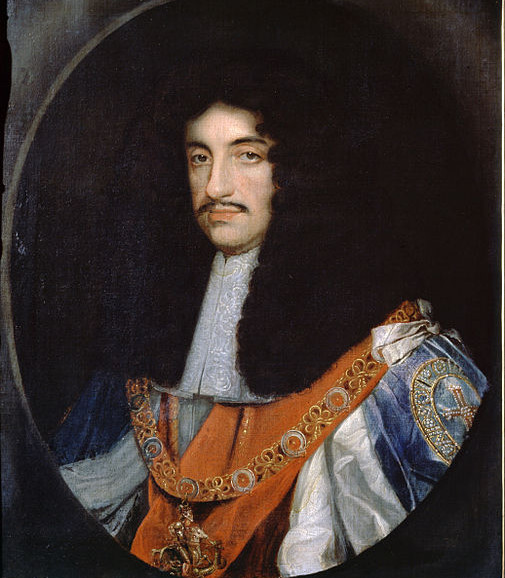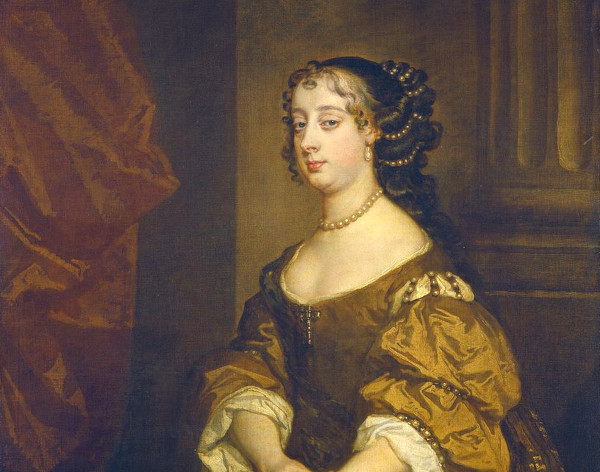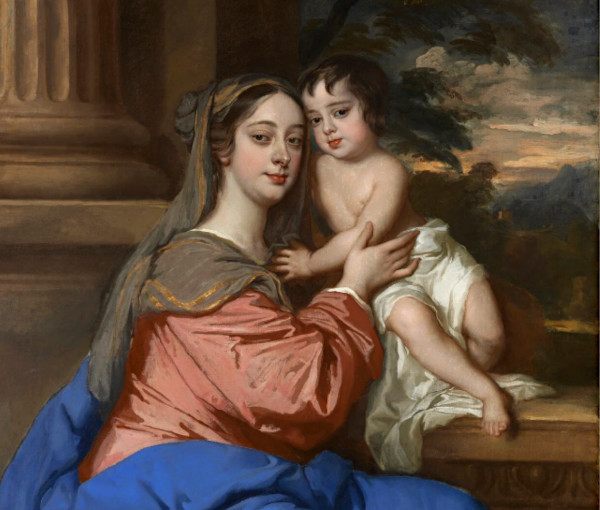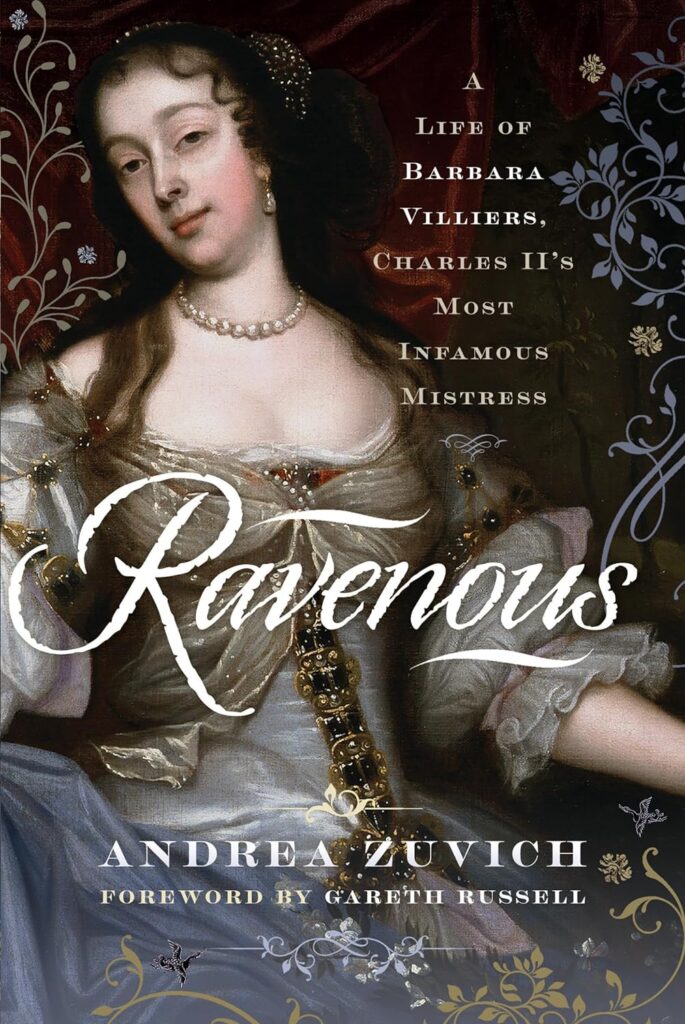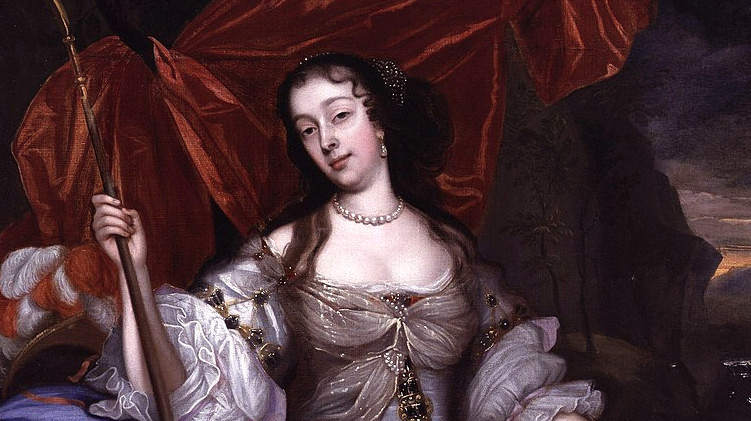
Barbara Villers, Countess of Castlemaine and later Duchess of Cleveland, was one of the most beautiful women of the Restoration period and probably Charles II’s most politically powerful mistress. She had a great appetite for wealth, influence, and handsome men, as Andrea Zuvich, author of Barbara’s biography, Ravenous, explains.
The Stuarts, who ruled over Scotland, England, and Ireland from 1603 to1714, had enough sex scandals, love affairs, and drama to outweigh even their Tudor predecessors; and with television series such as Mary & George, this oft-neglected time period is finally getting some attention… as is the Villiers family of the Stuart era.
Several members of this illustrious (and often, infamous) family had the honour of being very popular with several Stuart monarchs of the 17th century; George Villiers, for example, the gorgeous young man who captivated King James VI and I, was but the start of that family’s great power.
In at least one of his many portraits, he is depicted in ostentatious clothing, veritably dripping in costly pearls. A powerful favourite of not only King James, but later James’ son, King Charles I, George Villiers, who was created first Duke of Buckingham in 1623, held both great power and influence, but was widely hated. That hatred led to his assassination in Portsmouth in 1628.
One Villiers had gone — and in terrible circumstances — but then came Barbara Villiers, the granddaughter of George’s elder half-brother, Edward Villiers.
Barbara was a woman so beautiful, so sexually magnetic, that she has commanded our attention since her heyday in the 1660s. The daughter of William Villiers, Viscount Grandison, a Royalist who lost his life during the English (or British) Civil Wars, she grew up as an impoverished aristocrat craving a glamorous lifestyle that was beyond her reach. Her family’s once-great fortunes had been swallowed up by the turbulent years of warfare, exacerbated by being on the losing side of the war.
Barbara’s considerable charms, combined with her ambitious, passionate nature, would, in time, bring her into that sphere which she had so longed to join. When she met with Charles II, who had been in exile ever since he and his followers were defeated at the Battle of Worcester in 1651, they instantly hit it off.
It was the winter of 1660, and Barbara was then 18, recently married to a young gentleman named Roger Palmer (a rebound man after her relationship to Philip Stanhope, second Earl of Chesterfield, had come to an end), and a staunch supporter of the Stuart line.
The king was virtually penniless and largely living off the charity of his royal relatives. Within months of their first meeting, Charles’s fortunes had significantly improved. During the past decade and more, England had been a republic, the House of Lords abolished, and there was no monarchy.
This, however, would all change after Oliver Cromwell’s death in 1658, which led to his son, Richard Cromwell, becoming the second Lord Protector. Things did not work out for Oliver’s successor, and the young man resigned. Various problems culminated in bringing the Stuart monarchy back, and Charles II returned to England in 1660, to widespread rejoicing.
As crowds cheered and wine flowed, Barbara took her place in the king’s bed, and she got pregnant within the week. Charles started as he meant to continue, and he made no attempt to hide his liaison with the beguiling adulteress, who was widely considered to be ‘the finest woman of her age’.
Courtiers flattered Barbara, knowing that she could be their conduit to the king. She was an excellent hostess, with fine foods, wines, and an abundant helping of fun. Events which Barbara attended were certain to entertain.
For two years, Barbara was an uncrowned queen and enjoyed all the perks of having an almost-exclusive hold upon the king’s affections.
Things began to change in 1662, when Charles married Catherine of Braganza, a Portuguese princess with a sizable dowry of money as well as the ports of Tangier and Bombay. Barbara’s position suddenly became precarious, but Catherine was no match for the volatile mistress.
In the following year, Barbara was faced with a real challenge when the sweet, girly, Frances Stuart showed up at court, fresh from France. Charles became obsessed with Frances, but she refused to become his mistress, leading to several years of frustration for the king, and harassment for Frances. By the end of the decade, Frances had eloped and, her beauty damaged by smallpox, caused Barbara no further concern.
Throughout the 1660s, Barbara had many admirers, perhaps none more so than Samuel Pepys, who wrote in his diary about his sexual fantasies about the royal mistress.
Unlike many women at court, Barbara satiated her sexual desires with any man who took her fancy, regardless of their station. From actors such as Charles Hart and Cardonell Goodman, to the tight-rope walker Jacob Hall, and wealthy courtiers such as Ralph Montagu and Harry Jermyn, among others. So prolific was her love life, that it was often alluded to in poetry of the day:
The number can never be reckon’d
She fuck’d with great and small
From good King Charles the Second
To honest Jacob Hall.
She gave birth to six children (eight, counting the child she miscarried in 1667 and the son she reputedly had with her bad boy lover, Cardonell ‘Scum’ Goodman), five of whom were likely sired by Charles II.
In keeping with her great uncle, George Villiers, Barbara was a major fashionista and loved to be the centre of attention in obscenely expensive clothing and adorned in diamond and pearl jewellery, often outshining Queen Catherine herself.
Sir Peter Lely was captivated by her loveliness and she became his greatest muse and the model for many of his portraits. Some of her likenesses were engraved and made into more affordable prints, making her — in effect — a Stuart-era pin-up girl. Barbara’s stunning beauty inspired poets, such as John Dryden, and playwrights, such as William Wycherley, who also became her lover.
But Barbara was more than just an aesthetically-pleasing woman; she was an important political figure, manoeuvring men she favoured into positions held by those she disliked (whom she invariably targeted for dismissal). One of her most significant enemies was Edward Hyde, Lord Clarendon, Charles II’s most senior advisor.
Clarendon and Barbara had an intense mutual dislike for one another, both having great influence over the king. Some seven years after Charles had come to the throne, the moment Barbara had desired had come: Clarendon, a convenient scapegoat for many of the country’s problems, lost his position and went into exile.
By 1670, Barbara’s hold over King Charles had weakened and she was made Duchess of Cleveland and given properties and land, such as Nonsuch Palace. Although the King moved on to many other women, including the popular actress Nell Gwynn, few of them (even Louise de Kerouaille, who had taken Barbara’s place as Charles’s long-term mistress), could ever reach the heights which Barbara had achieved.
Ravenous: A Life of Barbara Villiers by Andrea Zuvich is published on 30 July, 2024.
Andrea is a historian and novelist. She hosts #StuartSaturday on Twitter/X and the #StuartSaturdayLive show on Twitter/X and YouTube.
You may also be interested in:
Review: Mary & George by Mark Turnbull
The monarch with the magic touch by Andrew Taylor, about Charles II
Andrew Taylor also writes about Louise de Kerouaille in Baby Face, Charles II’s French mistress
Charles II’s last mistress (about Hortense Mancini) and Catherine of Braganza, the neglected Queen, both by Linda Porter
Raise your Teacup for Catherine of Braganza! by Isabel Stilwell
Linda Porter‘s review of Later Stuart Queens, 1660–1735
And for more Restoration-era history:
Running with the regicides: Why I decided to venture into the Restoration by SG MacLean
And so to bed – a goodbye to Pepys’s diary and Health and Hellfire: Personalising the Plague in 17th Century London by Deborah Swift
Fake news, or the Horrid Popish Plot by Anna Abney
Images:
- Barbara Villiers by John Michael Wright, c1670: Ann Longmore-Etheridge for Flickr (public domain)
- George, Duke of Buckingham by Michiel Jansz van Miereveld, 1625–6: Art Gallery of South Australia via Wikimedia (public domain)
- Charles II after John Michael Wright: Dulwich Picture Gallery via Wikimedia (public domain)
- Barbara Villers, probably studio of Lely, 1661–5: Timken Collection, National Gallery of Art, Washington (public domain)
- Barbara with her and Charles II’s son Charles Fitzroy by Lely, c1664: Ann Longmore-Etheridge for Flickr (public domain)

